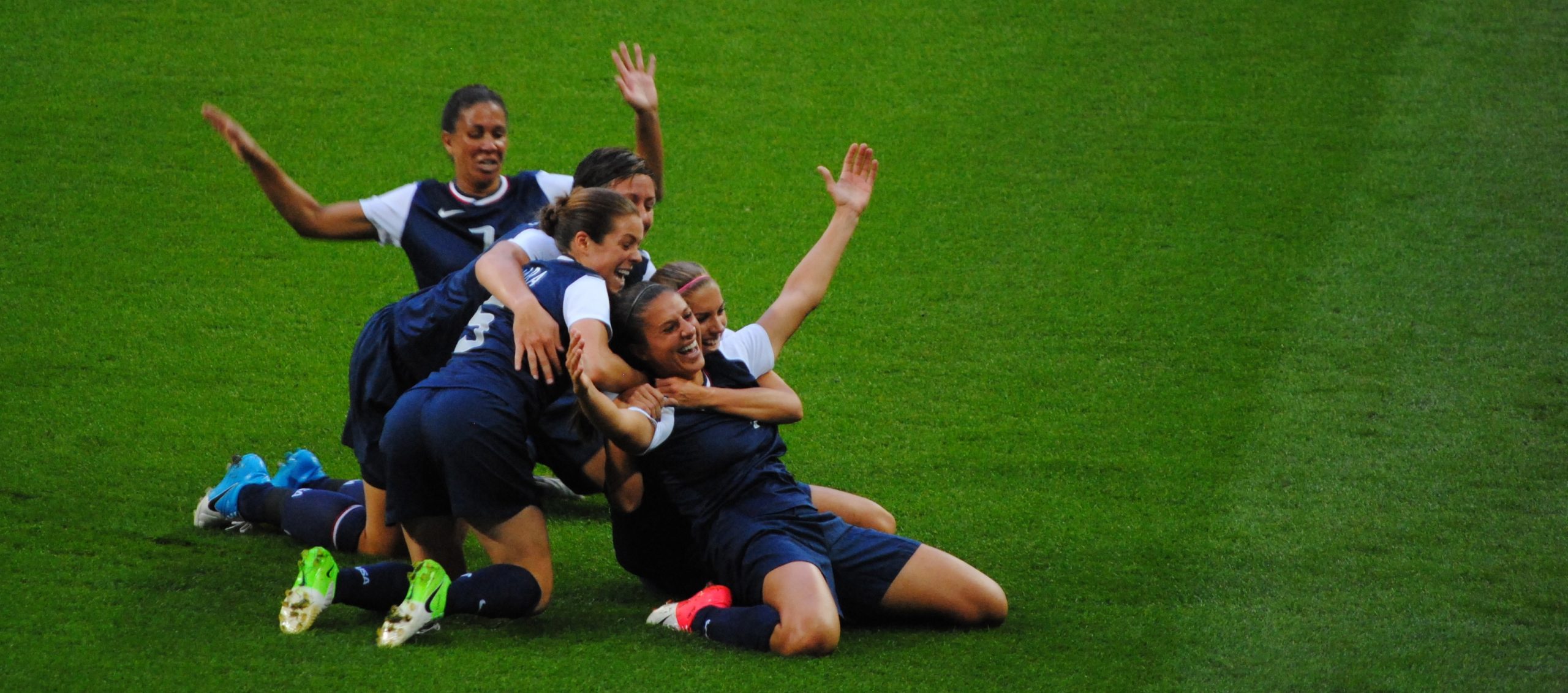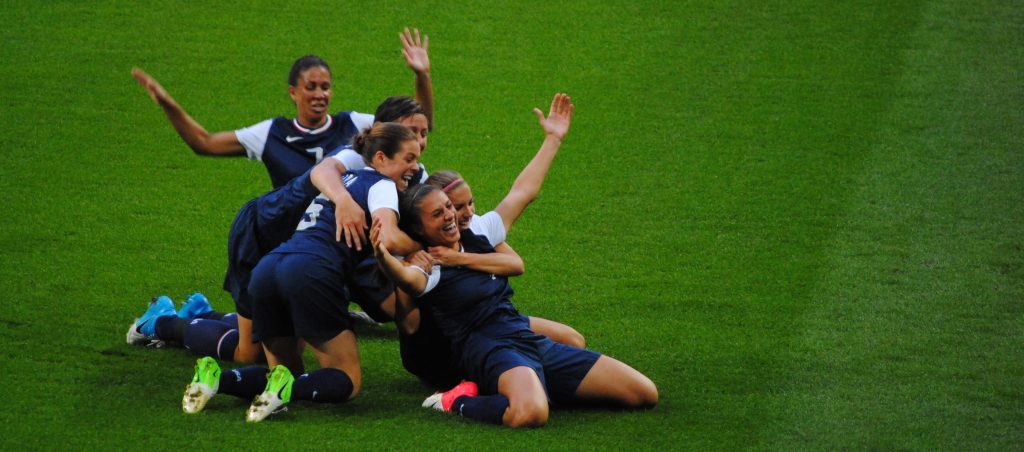It’s Super Bowl time, which for many means parties and crowding around the TV to watch two of the nation’s top football teams battle it out for the title of Super Bowl XLIX Champion. And at least for our President and CEO Jennifer Lockwood-Shabat, it will mean cheering on her precious Patriots. We’ve got some big sports fans at The Women’s Foundation, and we also have many for whom the draw of the big game is the chance to watch the commercials. This year, each of those ad spots will cost companies roughly $4.5 million for 30 seconds of air time.
When I heard that number, my jaw dropped. The thought of that much money being spent in 30 seconds sort of makes my heart stop, and it got me thinking about the sheer amount of money that goes into, not just the Super Bowl, but men’s sports in general. For example, every member of the winning Super Bowl team this year will receive a cash bonus of $97,000. Even the members of the losing team receive an additional $49,000 just for playing in the game. That means that the winning team’s players alone get more than $5 million in bonuses.
Want to make that number feel very, very small? The winning team of the Men’s 2014 Soccer World Cup in Brazil walked away with more than $35 million in prize money. The total prize pool was a record $576 million. The World Cup is the largest sporting event in the world, so it is fitting that the prize pool would also be the largest. But what about the prize pool for the upcoming Women’s 2015 Soccer World Cup in Canada? After all, FIFA bills the Women’s World Cup as the largest female sporting event in the world. Answer? $15 million, all in. That’s not what the winning team gets; that is the number that is divided among all the prize-winning teams. On the positive side, that number represents a 50% increase in prize money from four years ago. The winning team walks away with $2 million this year, doubling from the winner’s prize of $1 million at the last Women’s World Cup.
While the prize money gap seems staggering, the more concerning issue with the Women’s World Cup, may be that these world class female athletes will be playing on sub-par surfaces. Even after many athletes filed a lawsuit against FIFA accusing the organizers of discrimination, saying that elite men’s teams would never be forced to play on an artificial surface instead of natural grass, FIFA refused to upgrade the playing surfaces on all but one field. And so, the players in this year’s Women’s World Cup will be playing on artificial turf, a surface that puts players at a higher risk for injury. In an interview with NPR, U.S. Women’s National Team player Heather O’Reilly, said the plan to use fake grass “is a blatant demonstration of FIFA not placing the women side by side with the men. Many men’s players refuse to play on artificial turf, actually, and the thought of it being played in the World Cup is almost laughable.”
It would take about $3 million to upgrade the turf to sod. That is no small number, but when we look at the money being thrown at men’s sports, it really does start to feel very minuscule.
The common refrain is that women’s professional sporting events just don’t bring in the cash the same way that men’s do. And that is true. It is a vicious cycle. The Women’s Sports Foundation reports that in 2009 network affiliates dedicated only 1.6% of airtime to women’s sports, down from 6.3% in 2004. This male-dominated media coverage perpetuates smaller audiences for women’s sports. It takes money to break this vicious cycle and kick-start a virtuous one. If women’s teams had more money to invest in their talent, equipment, facilities and marketing efforts, could we see an increase in the cash earned by these teams?
I think the answer is yes. Men’s Major League Soccer (MLS) actually provides a good example. MLS reportedly lost an estimated $250 million during its first five years. But then, Adidas injected $150 million into MLS over 10 years. The league started building soccer-specific stadiums and investing in their talent and equipment. They signed a television deal. The average franchise is now worth $103 million, up more than 175% over the last five years, and the league keeps growing. Compare this to the Women’s United Soccer Association (WUSA), which folded in 2003 after only three years despite a world champion national team and national excitement from the 1999 Women’s World Cup. Their losses were only about $100 million, not even close to the $250 million MLS weathered. Could similar confidence in women’s soccer and subsequent financial investments have saved WUSA like it did for the now profitable MLS? We’ll never know.
However, if we look to tennis, we have a great example of what could be possible if female and male athletes were treated more equitably. In 2007, Wimbledon announced for the first time, it would provide equal prize purses to male and female athletes. All four Grand Slam events now offer equal prize money to the champions. In 2013, the US Open women’s final scored higher TV ratings than the men’s final.
So while we all gather around to watch millions of dollars flood the airwaves and University of Phoenix Stadium this Sunday, let’s think about how we can channel just a fraction of that into leveling the playing field for female athletes in the future.
I’m with you! What can I do?
Great question! The Women’s Sports Foundation has some good ways we can all help increase gender equality in sports:
- Attend women’s sporting events
- Support companies that advocate for women’s athletics
- Encourage television stations and newspapers to cover women’s sports
- Sign up to coach a girls’ sports team, whether at the recreational or high school level
- Encourage young women to participate in sports
- Become an advocate: if you are or know a female athlete that is being discriminated against – advocate for her rights.





